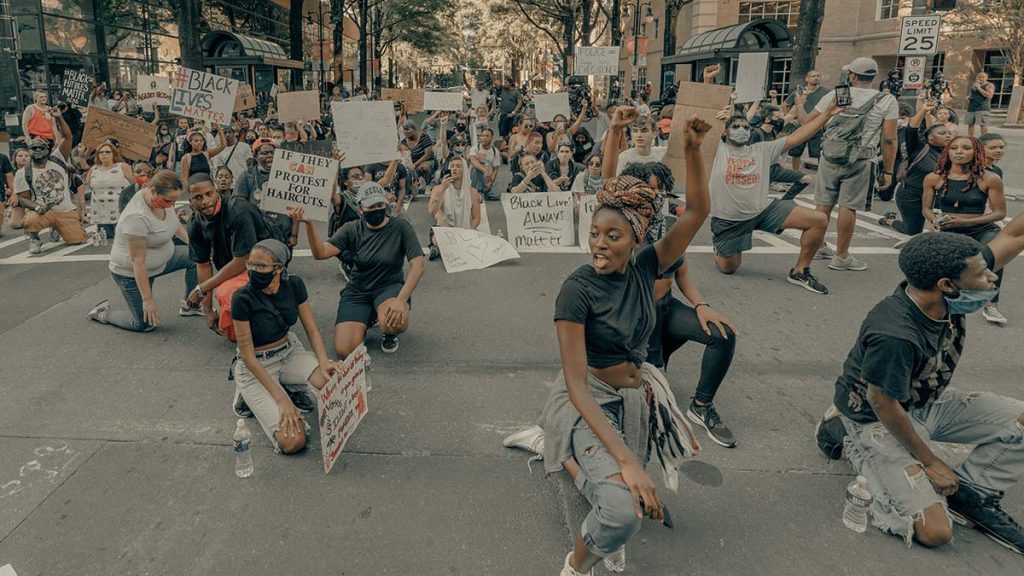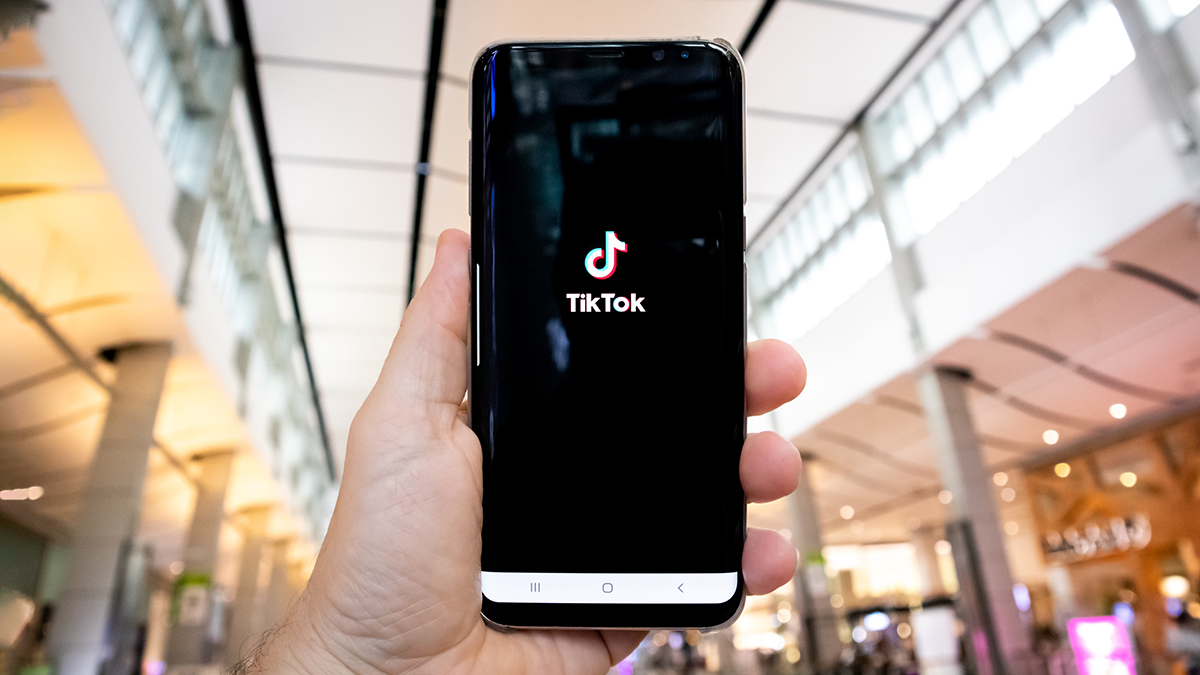TikTok is one of the fastest growing apps ever, but also a new hub for young activists to share their beliefs. How are they then leading the world into a new wave of activism?
The day Donald Trump walked into the stadium for his re-election rally in June of 2020, he had expected a few things: tens of thousands of his supporters screaming his name, adoring him and his beliefs. He had expected banners and a sea of red hats. But what he didn’t expect was a mostly empty stadium, filled by less than a tenth of its capacity.
When his team had originally announced the event, they received over a million ticket requests for a stadium that hosts 19,000. Trump had bragged about it on Twitter and then booked another nearby stadium to host more of his supporters. But when the day came, rows of seats were empty, and an entire stadium went unused. The rally had, in truth, been overridden by K-Pop fans, who had signed up online using aliases and fake social media accounts to book as many tickets as possible.
K-Pop fans had discovered that Trump was organising a free event in Tulsa, Oklahoma, through Twitter threads and TikTok videos. When they had earlier in the year spammed his hashtag #WhiteLivesMatter with photos and videos of K-Pop singers, organising an online mass-protest seemed the next obvious step to take.
This event, which some people call ‘Trump v K-pop’, was a ground-breaking moment that defined the power of online activism and its reach.
“With social media, you’re giving a chance to the people who didn’t have the chance to actually go out to physical protests or to be able to speak out,” explains Tin Lange, a TikTok user, and activist. “These people are now having platforms and spreading the word to millions of people. A lot of times internet access is the bare minimum. Or their phone is all they have. It’s not like everyone can just log on to a computer or a laptop; they cost thousands of dollars, and not everyone can afford that. And a lot of people can’t even afford to protest, because they can get arrested or even killed. For a lot of people, the only way that they can speak out is online.”

Ever since the app’s popularity exploded during the pandemic with over two billion downloads, TikTok has been used as a platform by young people and activists to educate themselves and others about what needs to be changed in the world: 54% of people aged between 18 to 29 years old responded to a survey saying they used social media to look for information about rallies or protests happening in their area.
Tin Lange, who is non-binary, is a 22-year-old activist who posts videos on TikTok, mostly relating to current events, racism, and homophobia. But they were an activist long before they posted their first TikTok video.
“I have kind of always been an activist because I don’t know how to keep my mouth shut,” they explain. “Since I was very young. It’s just that I started actually planning stuff and speaking more freely since I joined TikTok. And after getting a platform and followers, I have been advocating for more things.”
The popularity of TikTok does in fact mean that it can connect with a new demographic that might not have been exposed to activism, with the way people share and create content on the app. Nuurrianti Jalli, assistant professor at Northern State University, has done research in TikTok political activism and noted that the algorithm helps social movements by reaching more people.
“I found TikTok has a unique algorithm, which enables many views through its organic content promotion,” she wrote in The Conversation. “If used strategically, TikTok has great potential to boost grassroots political activism, not only in the US but even in regions where freedom of expression is limited.”
The ‘Trump v K-pop’ event was one in a series of many, where teens on social media made fun of political figures. However, the event had no proven consequence on the outcome of the election, which left people wondering if it really was activism, or just for show. Some people call this performative activism when people share content as a performance for their own personal gain, rather than to help. It is indeed one of the main problems people have when talking about social media activism used by young people.
“I feel like that’s not necessarily true,” Tin argues. “Regardless on if it’s performative or not, they’re still bringing these ideas onto the table, because they are literally regurgitating things that they hear from actual activism. So regardless of if it’s performative or not, in a way, it’s harmful, but in another way, it’s actually helpful because it’s putting the ideas out there, it started conversations that people would never have started 10 years ago, five years ago, even last year.”
There is a blurred line, a silver lining between performative and genuine activism, but it isn’t a black and white issue. In a podcast, two Yale professors and three Yale students discussed this issue but agreed indeed that “both are unavoidable parts of any social movement which organisers and activists can potentially capitalise on”.
In a world where the news and the media work at a constantly accelerating pace, Gen Z (people born after 1996) are faced with constant change and anxiety about the state of the world. Because of this, a lot of them, predominantly those under the age of 18, have taken to social media in the only way they can: they create videos, share photos, retweet petition links, repost fundraisers, all in the hope to help as best as they can.
“I feel like young people have become the face of activism,” says Tin Lange. “They’re less scared to talk about things that adults won’t talk about because for adults it tends to cost their careers. And a lot of these kids that are active in activism are in middle school or high school. These young people are bringing up conversations to the table that older people did not have the guts to do. The older people were the moderates; The younger people are the radicals. And I love that.”

TikTok is a platform where people feel comfortable sharing their thoughts, mainly because those people grew up on social media and are more comfortable there than older generations: they are digital natives, and even though their parents warned them not to speak to people online, it’s sometimes easier to share your problems with strangers. The comfort that Gen Z finds in confiding in TikTok, and by association with thousands of other users, is one of the ways they are leading a new wave of activism.
This generational difference is a reason why Tin finds that a lot of campaign groups, that are used to traditional forms of media to communicate to members of their organisations, struggle with the switch to TikTok: they had to adapt to the fast-changing pace of social media, when educating others, and creating campaigns and protests take time.
“I think the thing with them is that they’re trying too hard to be trendy,” Tin explains. “And they’re trying too hard to fit in to make the news appealing to us when that’s not what they should be doing. That’s not your goal. Your goal is to catch people’s attention. Tell them what’s going on. You know, instead of trying to be trendy, they should be controversial.”
Young people have always been precursors of change. It’s no surprise, then, that they are simply harnessing the newest technology to spread the word and help social issues.
“We are opening those types of conversations that previously the adults couldn’t have,” Tin concludes. “Because they were comfortable in their oppression. That’s how the kids are changing activism. Because they’re bolder, and they say: ‘adults are not protecting us, so we’re going do it ourselves.’”
SIX TIKTOK ACTIVISTS TO FOLLOW
TikTok is a hub for people to come together to share and create. Because of this, activism has taken different forms. Here are six TikTok users and activists that share videos and knowledge by using atypical methods.
Tin Lange, @imbigsowhat
Tin Lange would describe themselves by saying: “I’m neurodivergent, I’m an immigrant, I’m black, I’m women perceived, I’m nonbinary and I’m queer. That’s a lot of identities.” Their TikTok videos all touch on defending and educating about their identities.
Jordan Ramsy, @jordanramsy
Jordan Ramsy is a chef that posts videos of her cooking, but sometimes she pairs them with voiceovers about issues she cares about. One of her videos which went viral showed her cooking smashed buffalo potatoes in queso dip. But the audio talked about black women being discriminated against in medicine.
“Doctors are to black women what police officers are to black men,” the audio says.
That video was viewed over 3.3 million times. By pairing food and activism, Jordan Ramsy unites two trends to create viral videos to educate and alarm.
Zahra, @zahra
Zahra is an Afghan-American content creator, whose aim is to educate people on Islam. She started a TikTok series about answering questions about her hijab, in order to be as accessible as possible while educating others. Since then, she has made more ‘serious’ videos, including about Afghanistan, the Israel/Palestine conflict, or the ‘Muslim ban’ in France. She has grown to be one of the most followed activists on TikTok, with over three million followers.
Shina Nova, @shinanova
Shina is an indigenous content creator. She posts videos about educating people about the problems that face Native American communities, but also throat singing videos. By sharing this form of art and singing, her aim is to educate people on the beauty of a culture that was nearly eradicated but also to keep her Inuit culture alive through social media.
Habari Njema, @habari_njema
Habari is a woman who uses her platform to share innovations and good news from the African continent. The account was originally created to share news and current events She mentions that there isn’t enough positive coverage of Africa and that she has to play a role in portraying it in a more positive light. She has shared videos about a fridge that uses no electricity, created by Mohammed Bah Abba, or a new method for cleaning your teeth.
Lance Tsosie, @modern_warrior__
Lance Tsosie is a Native American activist who shares his experience and resources to learn about the Native American struggle and to help communities all over the American continent. His catchphrase, “Hey, Colonizer”, has caused a lot of controversy on TikTok, with people calling him racist. But he has persevered and is now one of the largest Indigenous creators on the app.
